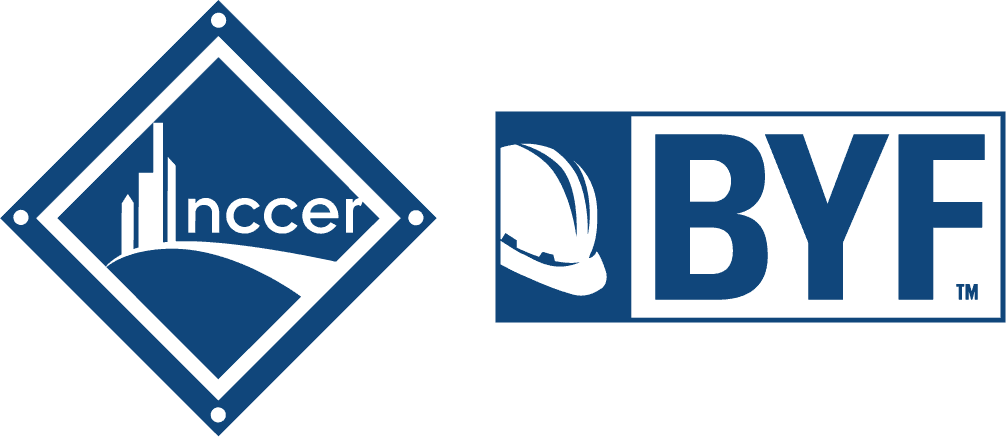By Nicole Needles, NCCER

The time for women in construction has come.
Historically, the construction industry has been male-dominated, with women making up only 11% of the workforce. Whether women are intimidated by the lack of representation in the workforce or the nature of the industry makes it difficult for them to enter, there has been an imbalance.
The lack of women in construction is one of the main reasons for the skilled labor shortage. According to the Construction Labor Market Analyzer, the construction industry faces a potential shortage of 3.1 million workers, and 19% of the existing skilled craft workers will retire within the next five years.
The construction industry needs to attract new talent, but it is struggling to do so at the same rate current construction professionals are retiring. Contributing to this is how the rising workforce is unaware of or uninterested in manual labor jobs or learning a craft with their hands, such as carpentry or welding. Young people are encouraged to go to college and work toward a four-year degree rather than exploring a craft or attending a technical or vocational school.
On top of the other factors affecting the labor shortage, women are not entering the construction workforce at the same rate as men when the industry needs their unique ideas, views, and skills. Construction thrives on men and women working together on the same project.

Diversity Contributes to Success
Everyone has a different life experience that gives them a perspective and set of skills that no one else can provide. That is why many different types of people, no matter their demographic, are needed on a job site and should be encouraged to pursue a career in construction.
One example of where diversity contributes to success is in problem-solving. Problem-solving is a prominent part of the day-to-day in construction, and having multiple points of view represented can be invaluable. Skills-wise, while men tend to excel with motor skills, women are better suited when it comes to intuition and critical thinking. Having a variety of different strengths on a team makes it more well-rounded.
Not only should more women be in the construction field, but more women should be in leadership roles in construction.
“Diversity of thought is gold at the leadership level. We all bring different perspectives built over many years of our combined experiences,” said Jennifer Wilkerson, Vice President of Innovation and Advancement at the National Center for Construction Education and Research (NCCER). “We also need diversity of thought in making decisions for the future as each of us has diverse thoughts on what that looks like.”

Keys to Making Construction More Inclusive for Women
It is evident that women are highly needed and valuable in the construction industry. What is the best way to make construction a more inclusive and inviting industry for talented craftswomen?
One way to bring more women into construction is to increase the scope of recruiting. Employers can emphasize their commitment to gender equality and diversity when advertising jobs. In addition, recruiters who talk to students at schools can make sure to converse or even hold networking and career day events geared exclusively toward young women.
Safety is a big concern on construction sites. Being around heavy machinery and falling debris can be viewed as a deterrent to joining the construction industry. However, many regulations exist to create a safe environment for everyone. All workers should have access to proper personal protective equipment (PPE). Since women and men are built inherently different, PPE bought with male productivity in mind will not be sufficient. Women’s build, material durability, and style options should all be criteria for women’s PPE.
Another aspect of safety is job site culture. Managers can increase safety for all workers through team assignments, have an open-door policy, ensure that job sites are always well-lit, and install cameras on site.
Human resources policies and benefits are crucial for recruiting and retaining women on a job site. For women to feel heard, cared for, and included, several policies would be beneficial for companies to provide.
First and foremost, companies should pay men and women in the same positions equally. Without equal pay, women may feel undervalued. Luckily, the skills-focused nature of construction work has already led to this industry having one of the lowest pay gaps between men and women, a trend that must continue.
It is beneficial to provide health, dental, and vision care. Still, paid family leave is also necessary for new mothers and fathers to get the time they need with their families early in the critical rest and development stage after childbirth. Women need time for their bodies to heal, and families need time together after this immense life-changing event. As a company, providing this flexibility will add to the perks and benefits that can be showcased in recruiting.
Finally, it is vital to train those in leadership positions to avoid behaviors that are sexist or misogynistic in any way. Holding company- or team-wide training on bias, inclusion, and diversity is a great effort to ensure everyone is on the same page and that individuals realize how their actions and words can be harmful and oppressive toward others.
Filling the Skills Gap
When more women join the workforce, not only will projects benefit from their unique capabilities, but the labor shortage will be filled over time, alleviating the struggle of a lack of workers since approximately 2008. Reaching out to women to show the construction industry has equally lucrative careers for them as other industries will decrease the workforce shortage and, more importantly, create opportunities for women to succeed and become industry leaders.
“Women comprise 51% of our current population, representing slightly more than half of our population. As our industry continues to face severe labor shortages and is actively looking for talent, it is only reasonable that we need to tap into women to fulfill these roles,” Wilkerson said. “Women need to see pathways for them in the industry.”

Nicole Needles is the Communications Coordinator at NCCER where she assists with the Breaking Ground Newsroom and other marketing efforts. She graduated in May 2020 from the University of Florida with her bachelor’s degree in journalism.

About NCCER – NCCER is a not-for-profit 501(c)(3) education foundation created by the construction industry to develop standardized curricula and assessments with portable credentials and certifications for skilled craft professionals. NCCER provides a comprehensive workforce development system that includes accreditation, training, assessment, certification, and career development solutions for the construction and maintenance industries. For more information, visit www.nccer.org or contact NCCER customer service at 888.622.3720.
About Build Your Future – Build Your Future (BYF) is NCCER’s national image enhancement and recruitment initiative for the construction industry. Its mission is to recruit the next generation of craft professionals by making career and technical education a priority in secondary schools, shifting negative public perception about careers in the construction industry and providing a path from ambition, to training, to job placement as a craft professional. BYF provides several resources to assist the industry, education, and military organizations in achieving these goals. For more information, visit https://byf.org.
